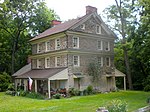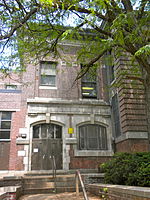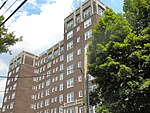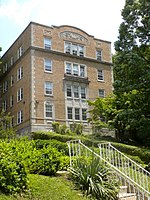Adelbert Fischer House
Art Nouveau architecture in PennsylvaniaHouses completed in 1909Houses in PhiladelphiaPennsylvania building and structure stubs
The Adelbert Fischer House is a home in Philadelphia designed by architect Milton Bennett Medary. It was built in 1909. It is one of only several Art Nouveau buildings in Philadelphia. It inspired later works by Robert Venturi and Denise Scott.
Excerpt from the Wikipedia article Adelbert Fischer House (License: CC BY-SA 3.0, Authors).Adelbert Fischer House
Wissahickon Lane, Philadelphia
Geographical coordinates (GPS) Address Nearby Places Show on map
Geographical coordinates (GPS)
| Latitude | Longitude |
|---|---|
| N 40.042153 ° | E -75.201573 ° |
Address
Wissahickon Lane 1
19119 Philadelphia
Pennsylvania, United States
Open on Google Maps







